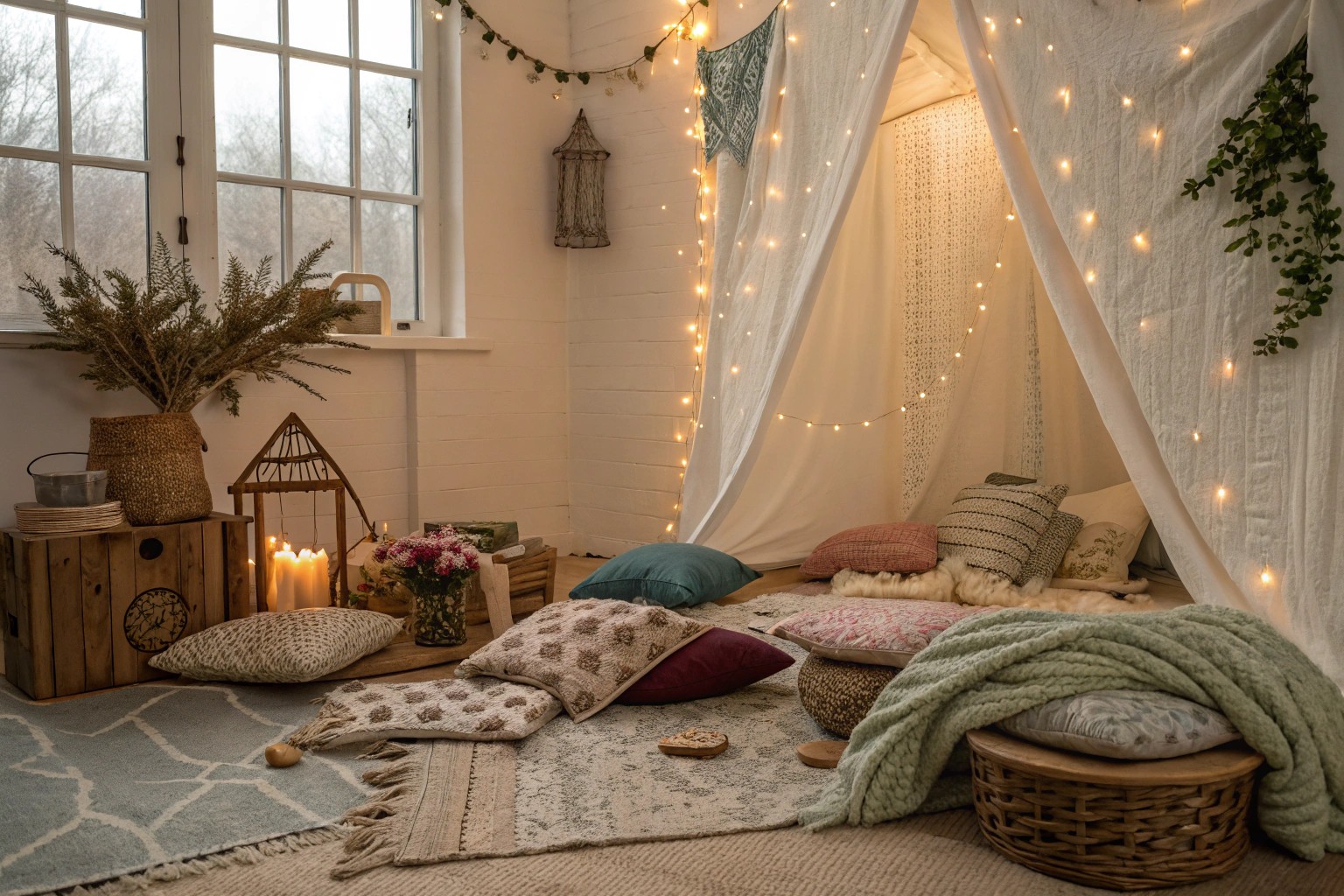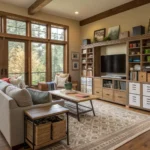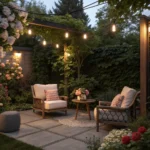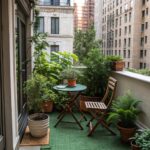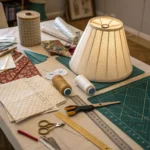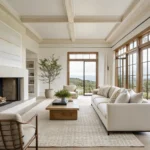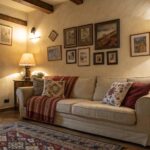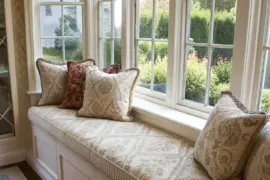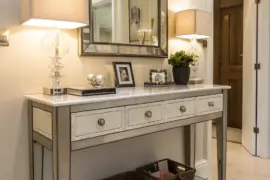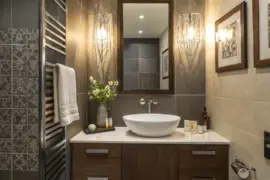Transforming a windowless room from a stark, confining space into an inviting sanctuary requires understanding how textiles and color work together to manipulate light, depth, and emotional response. Through strategic fabric selection and color psychology, you can create environments that feel both spacious and intimate, regardless of natural light availability.
Understanding Color Psychology in Windowless Spaces

The absence of natural light fundamentally changes how colors behave in interior spaces. Without the dynamic quality of sunlight to activate and shift color temperatures throughout the day, we must rely on artificial lighting and reflective surfaces to bring textiles to life.
The Science of Color Response in Low-Light Environments
Color psychology becomes even more critical in windowless rooms because occupants depend entirely on the emotional cues provided by the designed environment. Research demonstrates that specific colors can influence productivity, relaxation, and overall well-being in ways that become magnified when natural light cues are absent.
Primary Color Categories and Their Effects:
| Color Family | Psychological Impact | Best Applications | Textile Recommendations |
|---|---|---|---|
| Cool Blues | Calm, productivity, trust | Home offices, bedrooms | Linen curtains, wool throws |
| Warm Neutrals | Comfort, stability, spaciousness | Living areas, dining rooms | Cotton upholstery, jute rugs |
| Soft Greens | Balance, renewal, nature connection | Reading nooks, meditation spaces | Velvet cushions, organic cotton |
| Energizing Yellows | Optimism, creativity, alertness | Craft rooms, kitchens | Silk accents, canvas wall hangings |
I’ve observed that rooms lacking natural light benefit most from what I call the “layered warmth” approach—using multiple tones within a single color family rather than relying on stark contrasts. This creates visual continuity while preventing the flat appearance that can plague windowless spaces.
Cultural and Personal Color Associations
When selecting colors for windowless environments, consider both universal psychological responses and cultural symbolism that resonates with occupants. For American audiences, certain color associations carry particular weight:
- Red tones: Associated with energy and hospitality, ideal for social spaces
- Blue variations: Convey professionalism and tranquility, perfect for work areas
- Green hues: Connect to nature and growth, essential in spaces without outdoor views
- Neutral palettes: Provide flexibility and timeless appeal, suitable for frequently used rooms
Strategic Textile Selection for Light Amplification
The key to maximizing light in windowless rooms lies in understanding how different textile surfaces interact with artificial illumination. Glossy and reflective fabrics can dramatically increase perceived brightness, while matte textures absorb light and create intimacy.
Reflective Surface Integration
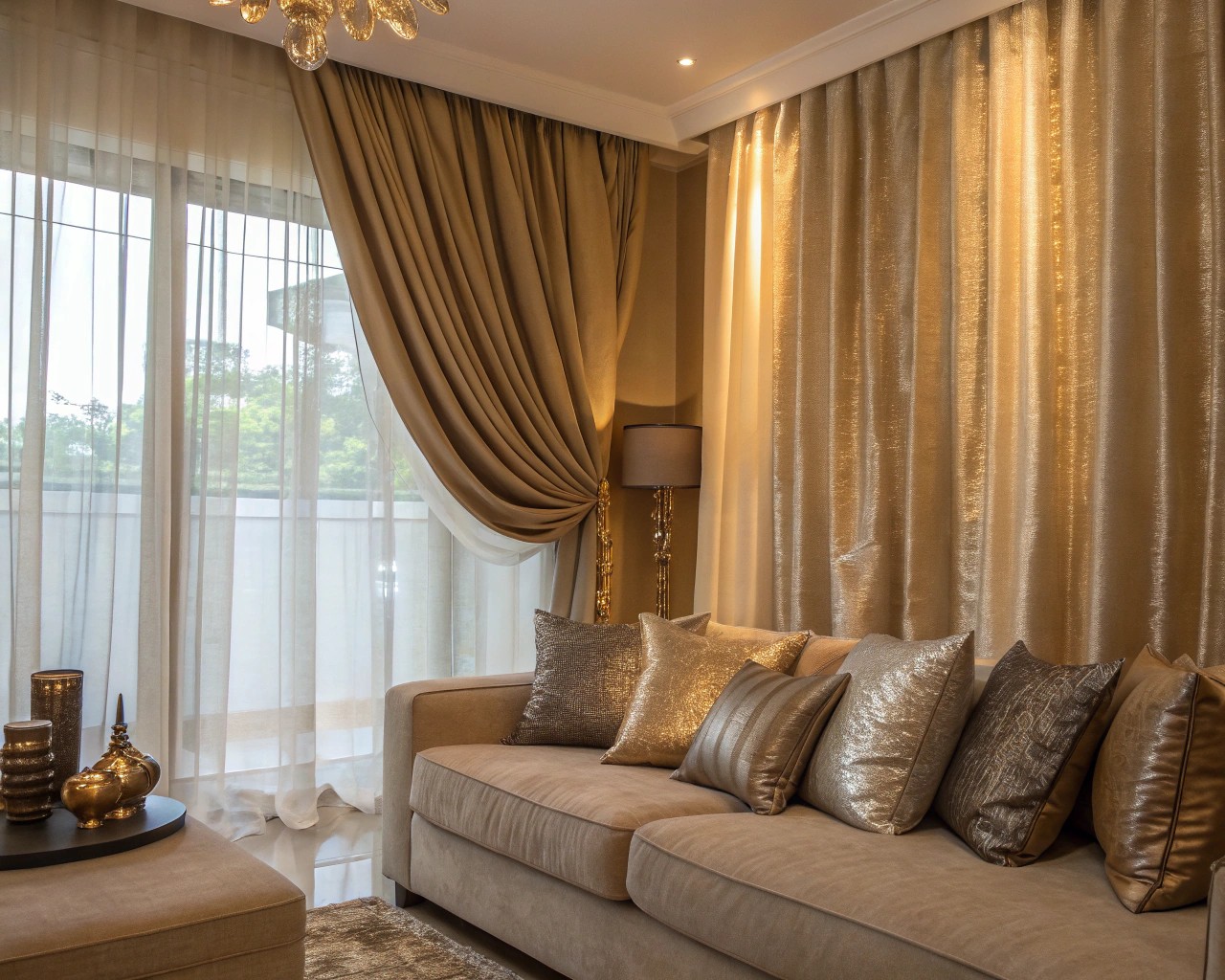
High-Gloss Fabric Options:
- Silk curtain panels that catch and scatter light
- Metallic-threaded upholstery fabrics
- Polished cotton with subtle sheen
- Satin pillow covers for accent pieces
I consistently recommend incorporating at least 30% reflective textile surfaces in windowless rooms to create the illusion of depth and movement. Position these strategically across from light sources to maximize their light-bouncing potential.
Texture Combinations for Visual Interest
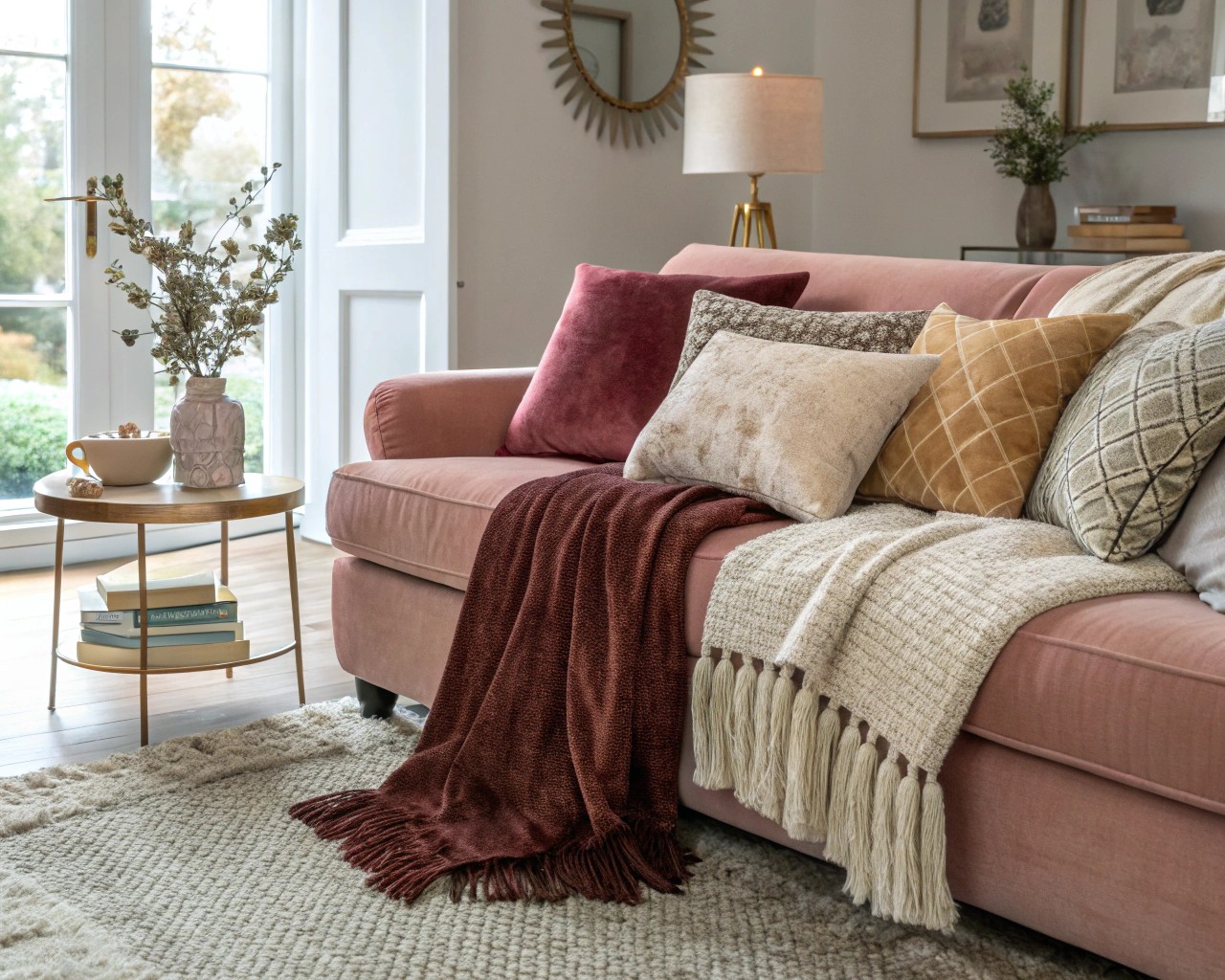
Layering different textile textures prevents the flat appearance that can make windowless rooms feel lifeless. Consider this systematic approach:
Foundation Layer (60% of textile volume):
- Smooth, light-colored base fabrics
- Linen or cotton in whites, creams, or pale blues
- Large area rugs in neutral tones
Accent Layer (30% of textile volume):
- Medium-texture fabrics with visual interest
- Wool throws with subtle patterns
- Woven cotton curtains with dimensional weave
Statement Layer (10% of textile volume):
- Bold textures or colors for focal points
- Velvet cushions in deeper tones
- Faux fur throws for tactile contrast
Fabric Weight and Drape Considerations
In windowless environments, fabric weight affects both light transmission and room acoustics. Lighter fabrics allow artificial light to filter through, creating layered illumination effects, while heavier fabrics can absorb sound and create intimate zones within larger spaces.
Light-Weight Options:
- Sheer linen for window treatments (even without windows)
- Cotton voile for room dividers
- Lightweight silk for flowing curtains
Medium-Weight Choices:
- Canvas for wall hangings
- Wool-blend upholstery
- Cotton-linen blends for durability
Heavy-Weight Applications:
- Velvet for acoustic dampening
- Thick wool for floor coverings
- Canvas or duck cloth for wall installations
Layering Techniques for Depth and Visual Interest
Creating visual depth in windowless rooms requires systematic layering that mimics the complexity found in naturally lit spaces. This approach builds dimensional interest while maintaining color harmony throughout the room.
The Three-Layer System
Background Layer: Wall Treatments
Wall-mounted textiles serve as the foundation for your color scheme while addressing acoustic concerns common in windowless spaces. Consider installing fabric wall panels using stretch systems that allow for easy updates and maintenance.
I recommend starting with neutral, light-reflecting base fabrics on the largest wall surfaces. These create a canvas for more dramatic textile additions while ensuring the room feels open rather than confined.
Middle Layer: Furniture and Window Treatments
Even without windows, curtain installations can create the illusion of openness and architectural interest. Install ceiling-mounted tracks along one or more walls and hang floor-to-ceiling panels in colors that complement your base layer.
Furniture upholstery should bridge your wall treatments and accent pieces:
- Sofas in coordinating neutrals with slightly more saturation than walls
- Chairs that introduce your first accent colors
- Ottoman and bench fabrics that preview bolder statement pieces
Foreground Layer: Accents and Art Textiles
This layer introduces personality and seasonal adaptability. Include:
- Throw pillows in 2-3 coordinating accent colors
- Blankets and throws for texture variation
- Wall-hung textile art pieces
- Area rugs that ground the color scheme
Pattern Mixing for Visual Complexity
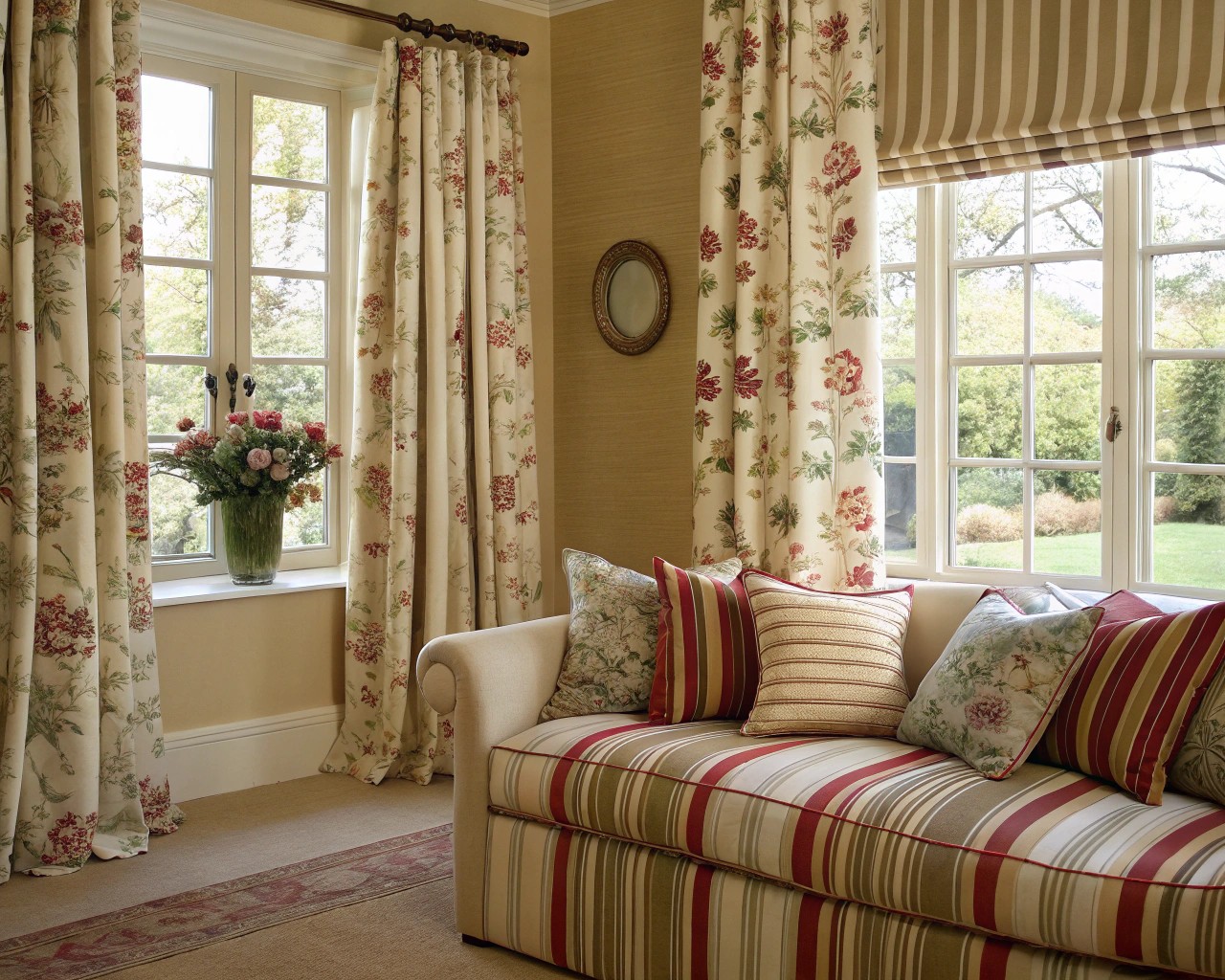
Successful pattern combinations in windowless rooms require extra attention to scale and color relationships. Without natural light to create shifting shadows and highlights, patterns must work harder to create visual movement.
Scale Progression:
- One large-scale pattern (area rug or main curtain panels)
- Two medium-scale patterns (throw pillows, accent chair)
- Three small-scale patterns (decorative accessories, minor textiles)
Color Distribution:
- Dominant color: 60% (usually your lightest, most reflective choice)
- Secondary color: 30% (medium tone for main furniture pieces)
- Accent color: 10% (boldest choice for statement pieces)
Creating Focal Points with Fabric Treatments
Windowless rooms benefit enormously from intentional focal points that draw the eye and create visual anchors. Textile installations can serve this purpose while adding functional benefits like improved acoustics and thermal comfort.
Statement Wall Treatments
Custom Fabric Wall Installation
Professional fabric walling creates luxurious, cohesive surfaces that transform room acoustics while establishing dramatic color presence. This technique works particularly well behind headboards, in dining areas, or as featured walls in living spaces.
The installation process involves:
1. Building perimeter frames around wall features
2. Adding padding for acoustic benefits and soft-touch feel
3. Stretching and securing fabric in seamless installations
4. Finishing with decorative trim or clean edges
I’ve found that fabric walls in windowless rooms should typically be 2-3 shades lighter than you might choose for naturally lit spaces to prevent overwhelming the environment.
Suspended Textile Elements
Create visual interest and functional space division with suspended fabric installations:
- Ceiling-mounted fabric panels as room dividers
- Draped canopies for intimate seating areas
- Suspended textile art pieces that move with air circulation
Furniture-Integrated Textile Statements
Custom Upholstery Projects
Windowless rooms often benefit from furniture scaled specifically for the space. Custom upholstery allows precise color matching and creates pieces that maximize both comfort and visual impact.
Consider these custom approaches:
- Built-in seating with coordinated cushions
- Window seat installations with storage underneath
- Custom ottoman arrangements for flexible seating
Coordinated Textile Suites
Develop cohesive textile packages that unify disparate furniture pieces:
- Matching pillow sets across multiple seating areas
- Coordinated table linens and window treatments
- Harmonized throw collections for seasonal changes
Color Schemes That Transform Dark Spaces
Successful color schemes for windowless rooms must balance the need for brightness with the desire for sophistication and mood. The absence of natural light creates opportunities for color combinations that might feel overwhelming in sun-filled spaces.
Light-Expanding Color Strategies
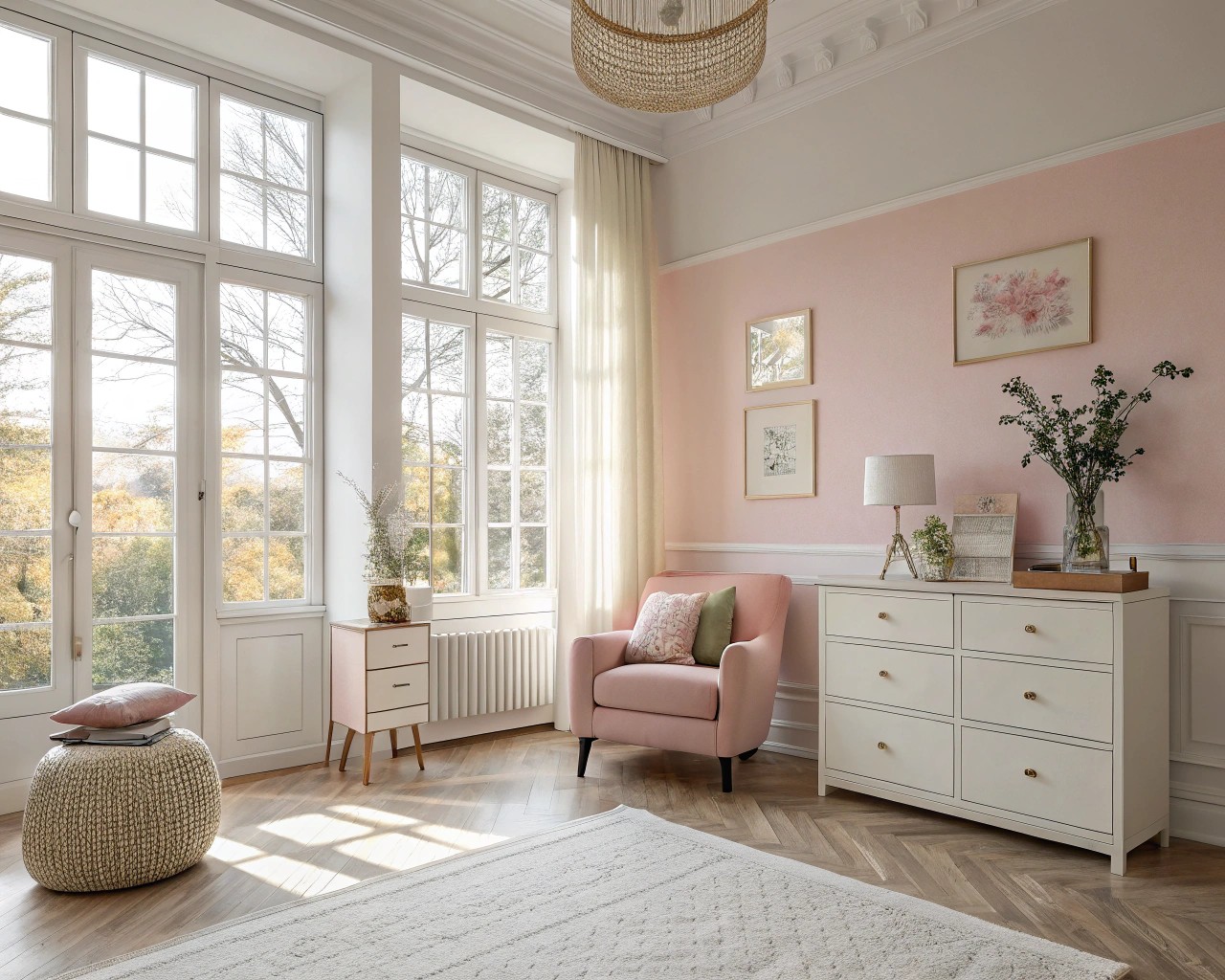
Monochromatic Approaches
Working within a single color family creates sophisticated depth while maximizing light reflection. Choose three to four shades within your selected family:
- Lightest shade: Wall treatments and largest fabric areas
- Medium tone: Primary furniture upholstery
- Medium-dark: Accent furniture and secondary textiles
- Darkest shade: Small accents and grounding elements
Cool-Tone Palettes for Spaciousness
Cool colors naturally recede, making them excellent choices for creating the illusion of expanded space:
Sage Green Foundation:
– Walls: Pale sage linen panels
– Furniture: Medium sage cotton upholstery
– Accents: Forest green velvet pillows
– Contrast: Cream and white textiles
Soft Blue Serenity:
– Base: Powder blue cotton wall treatments
– Primary: Slate blue wool furniture
– Depth: Navy blue accent pieces
– Balance: Warm white and cream elements
Warm-Tone Combinations for Intimacy
While cool tones expand space, warm colors create intimacy and coziness that can transform windowless rooms into welcoming retreats.
Earth-Tone Harmony:
- Foundation: Warm beige and cream base textiles
- Richness: Terracotta and rust accent fabrics
- Depth: Chocolate brown grounding pieces
- Brightness: Golden yellow highlight elements
Sophisticated Neutral Warmth:
- Primary: Various shades of warm gray
- Accent: Soft lavender and dusty rose
- Grounding: Charcoal and deep taupe
- Brightness: Ivory and pale yellow touches
High-Contrast Strategies for Drama
Some windowless rooms benefit from bold contrast that creates dramatic interest and diverts attention from the lack of natural light.
Black and White Foundation with Color Pops:
This timeless approach provides flexibility for seasonal color changes:
- Base: White and cream primary textiles
- Grounding: Black accents and patterns
- Seasonal: Rotating accent colors (coral spring, emerald summer, amber fall, sapphire winter)
Practical Implementation Strategies
Successfully transforming windowless rooms requires systematic planning that considers both immediate impact and long-term adaptability. The implementation process should prioritize quick wins while building toward comprehensive transformation.
Phase-Based Implementation
Phase 1: Foundation Setting (Weeks 1-2)
Begin with changes that provide immediate impact and establish your color direction:
- Paint walls in your chosen base color
- Install primary lighting improvements
- Add largest textile element (area rug or curtain panels)
Phase 2: Major Textile Integration (Weeks 3-6)
Introduce substantial fabric elements that define the room’s character:
- Reupholster key furniture pieces or add slipcovers
- Install wall textile treatments
- Add window treatment installations (even without windows)
Phase 3: Layering and Refinement (Weeks 7-10)
Complete the transformation with layered accents and fine-tuning:
- Introduce patterned textiles and accent colors
- Add throw pillows, blankets, and decorative textiles
- Install any remaining decorative elements
Budget-Conscious Approaches
High-Impact, Low-Cost Changes:
- Fabric wall hangings using affordable canvas or cotton
- DIY pillow covers in coordinating fabrics
- Throw blankets and scarves as temporary color accents
- Fabric-covered storage boxes for dual function
Investment Pieces for Long-Term Value:
- Quality area rugs that anchor the space
- Custom window treatments that create architectural interest
- Professional upholstery for key furniture pieces
- Durable wall textile installations
Seasonal Adaptability Systems
Design your textile plan to accommodate seasonal changes that can refresh the space and maintain visual interest throughout the year.
Modular Accent System:
- Base textiles remain constant year-round
- 20% of accents change seasonally
- 10% of elements rotate monthly
- Focus changes on easily swapped items (pillows, throws, small textiles)
Color Temperature Adjustments:
- Spring: Introduce fresh greens and soft yellows
- Summer: Add cooling blues and crisp whites
- Fall: Incorporate warm oranges and rich browns
- Winter: Emphasize deep reds and cozy textures
Maintenance and Adaptability
Windowless rooms often experience different wear patterns than naturally lit spaces, requiring specific maintenance considerations and adaptation strategies to maintain their transformative effects.
Fabric Care in Low-Light Environments
Dust and Air Quality Management
Without natural air circulation from windows, windowless rooms can accumulate dust more readily, particularly on textile surfaces. Establish regular maintenance routines:
- Weekly vacuuming of upholstered surfaces
- Monthly rotation of removable textile elements
- Quarterly professional cleaning of fixed installations
- Annual assessment of fabric condition and color retention
Color Preservation Strategies
While UV fading is less concern without direct sunlight, artificial lighting can still affect fabric colors over time. Choose fade-resistant fabrics and rotate accent pieces regularly to maintain color vibrancy.
Evolution and Updates
Planned Obsolescence Approach
Design your textile plan with intentional update points:
- Accent textiles (pillows, throws): Replace every 1-2 years
- Secondary elements (curtains, smaller rugs): Update every 3-5 years
- Investment pieces (major upholstery, wall treatments): Plan for 7-10 year lifecycle
Adaptation for Changing Needs
Windowless rooms often serve multiple functions, requiring textile solutions that can adapt:
- Modular seating with interchangeable covers
- Moveable textile panels for space division
- Multi-functional storage with textile integration
- Flexible lighting systems that highlight different textile combinations

